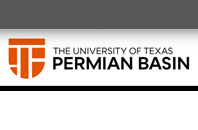
Publications & Presentations
A New Algorithm to Measure the Convergence of PSO with an Application to Hydronic Design in Buildings
Document Type
Article
Publication Date
2019
Abstract
The particle swarm optimization (PSO) method is one of the simplest methods to apply in order to solve HVAC engineering design optimization problems. The effective application of this method in design requires an appropriate criterion for convergence and a good estimate of the number of particles to use. A common way to check for convergence in many iterative methods is to monitor the change in the objective function. However, in this paper, the authors propose using the distribution of particles to determine the convergence of the PSO method. Because of the variety of objective functions that may be possible in HVAC design, the authors investigate the rate of convergence and the appropriate number of particles using some representative test functions as well as a practical hydronic design problem. The hydronic problem simulates closed-loop systems starting with two floors and a basement to 28 floors and a basement. The results show that the PSO method does not always convergetothe solutionwhen aninsufficient number of particles are used and may be too costly if too many particles are used. For the hydronic design in this study, the recommended number of particles is eight for a two-floor building increasing to 32 for a 28-floor building. In other HVAC design problems, the same number of particles may be used to start the iteration process
Recommended Citation
Bravo, Ramiro H,PhD., P.E., & Flocker, Forrest W,PhD., P.E. (2019). A new algorithm to measure the convergence of PSO with an application to hydronic design in buildings. ASHRAE Transactions, 125, 549-557. Retrieved from http://ezproxy.utpb.edu/login?url=https://www-proquest-com.ezproxy.utpb.edu/scholarly-journals/new-algorithm-measure-convergence-pso-with/docview/2334750900/se-2?accountid=7137

